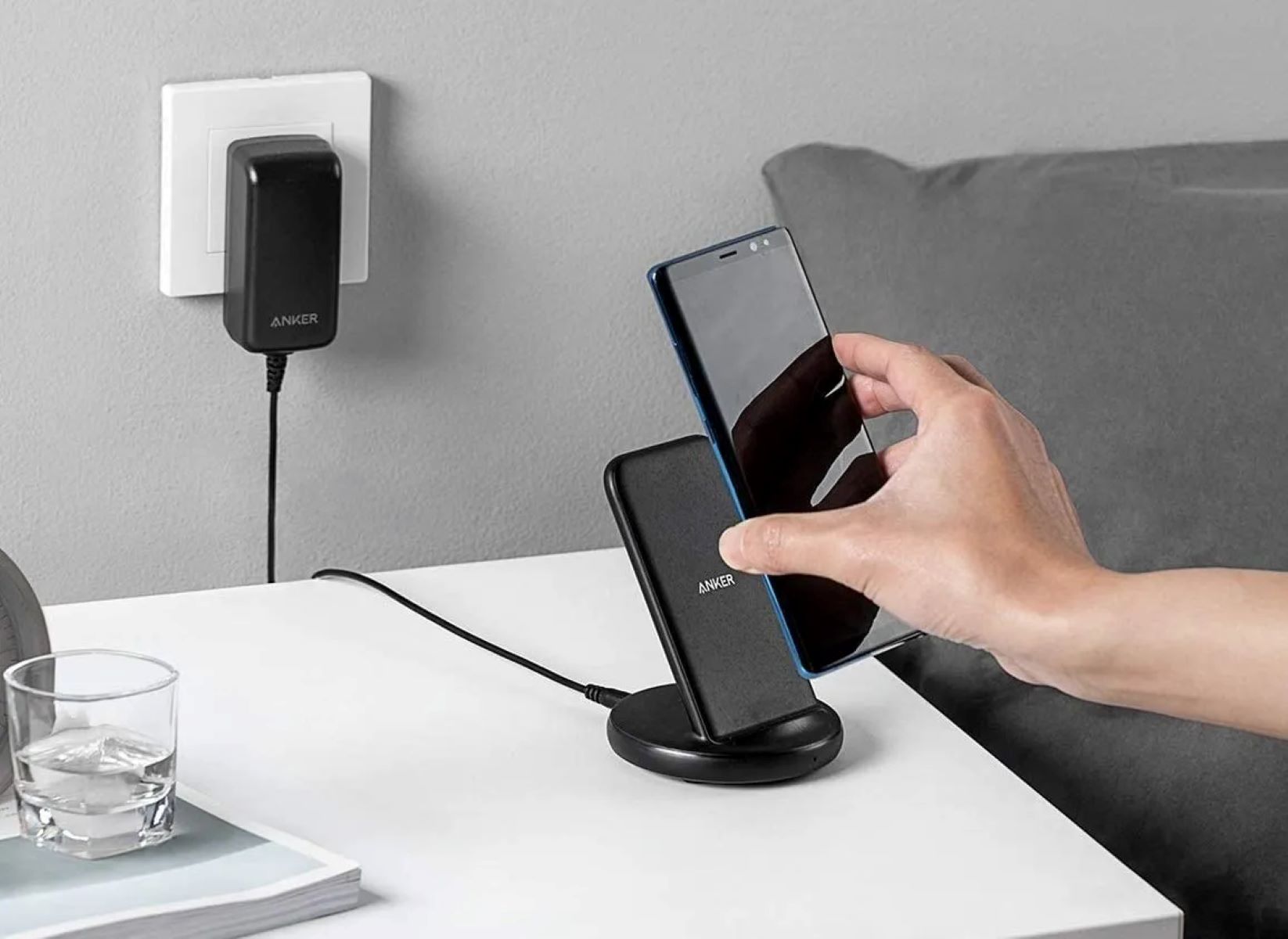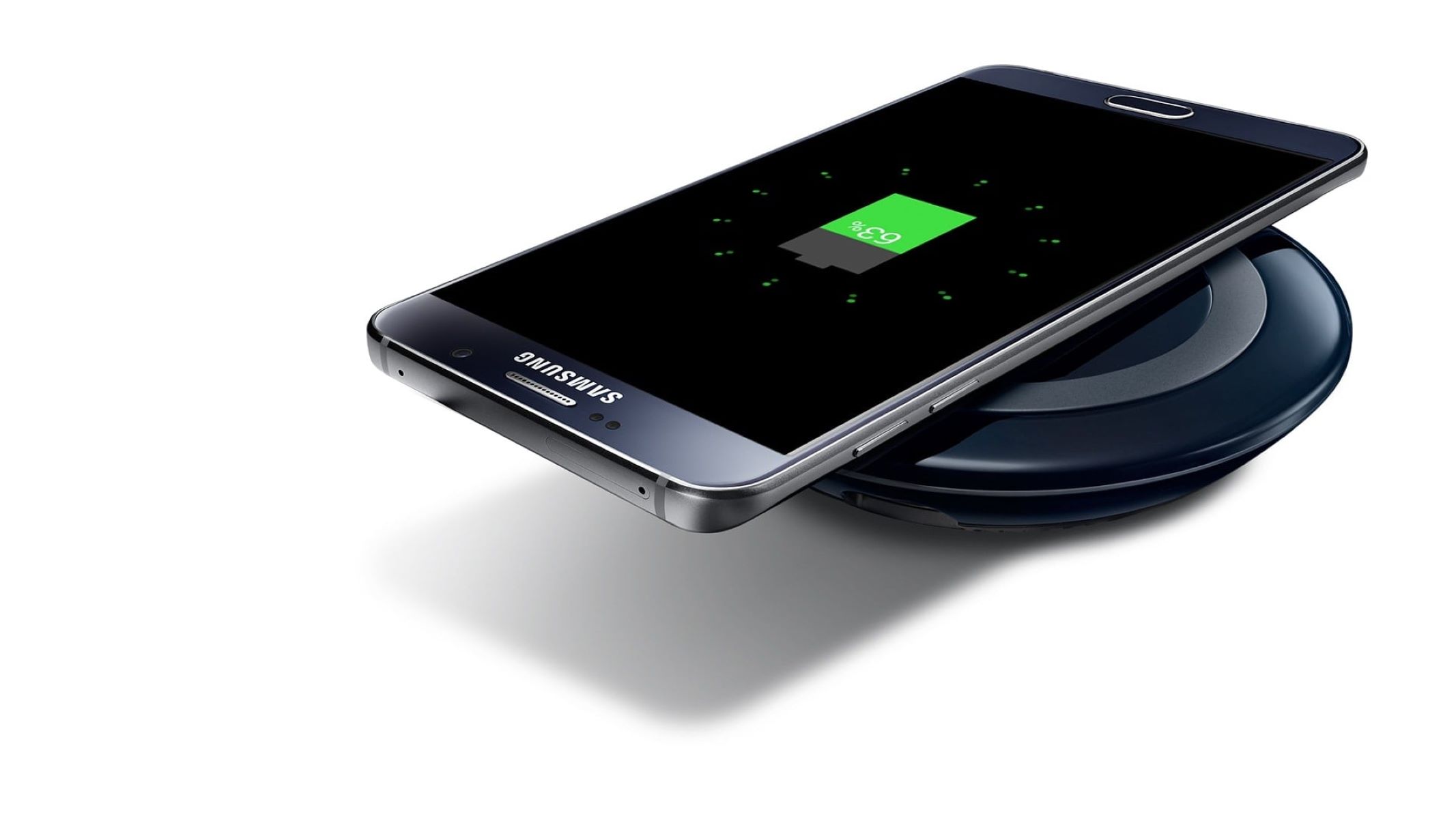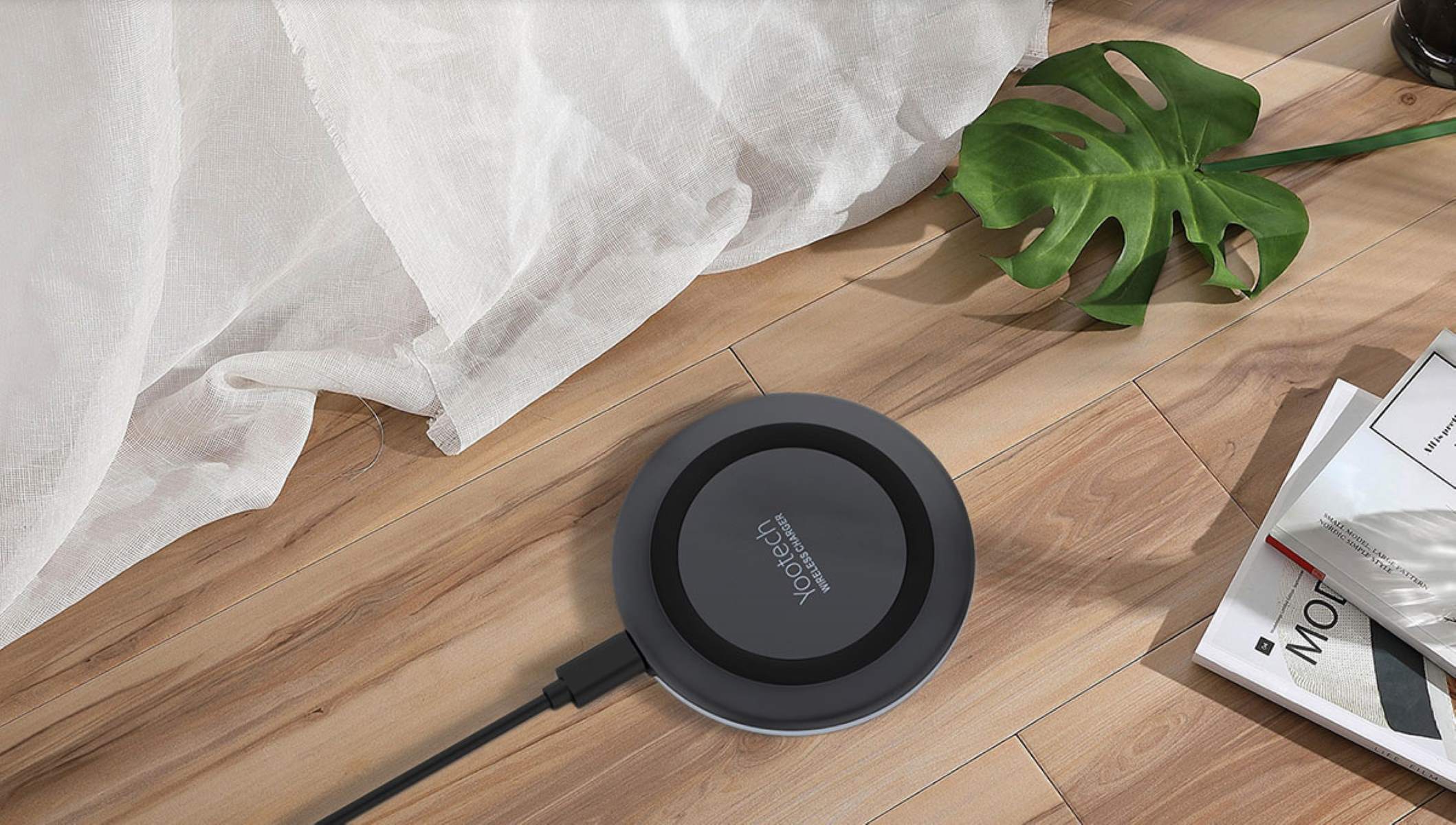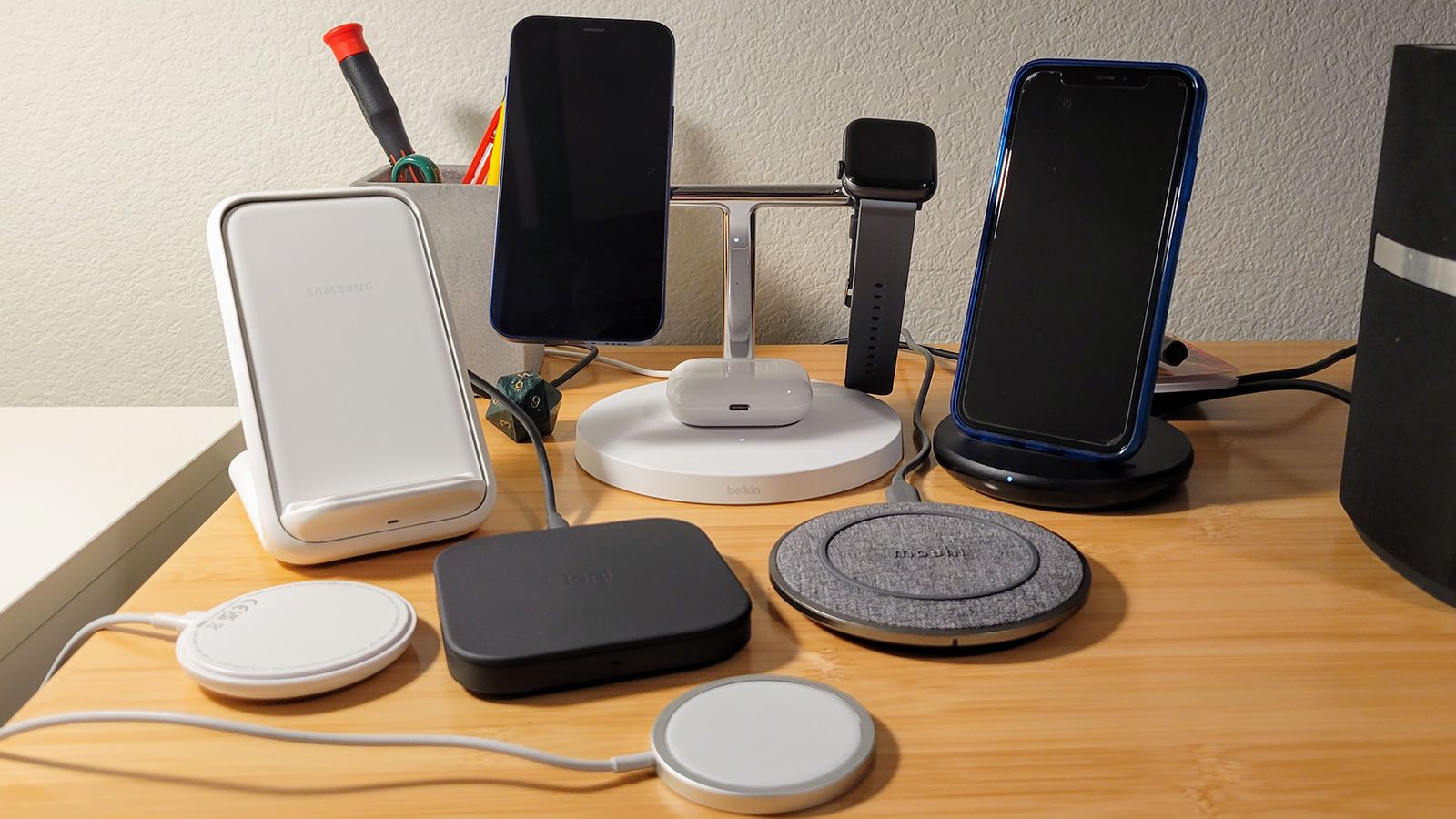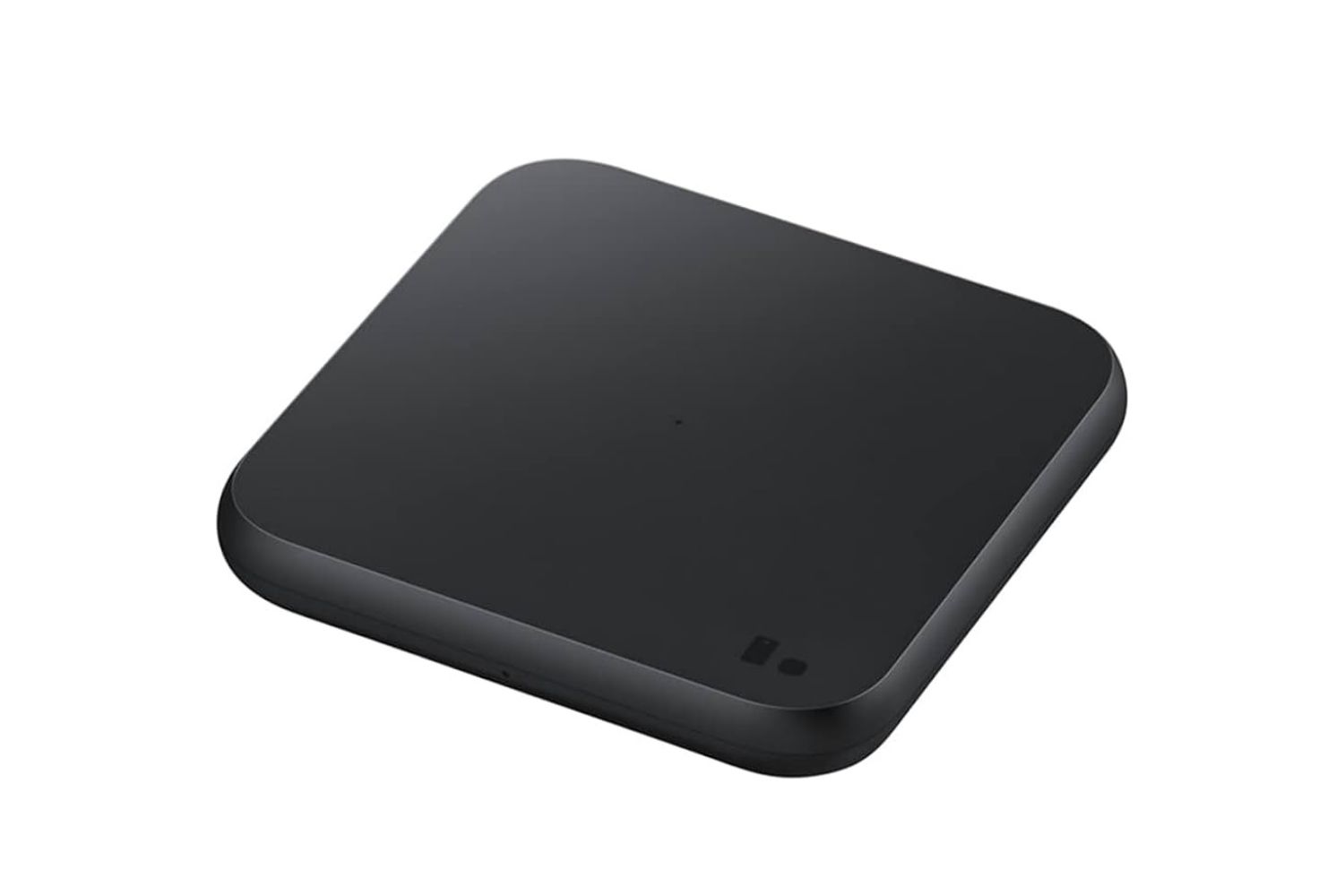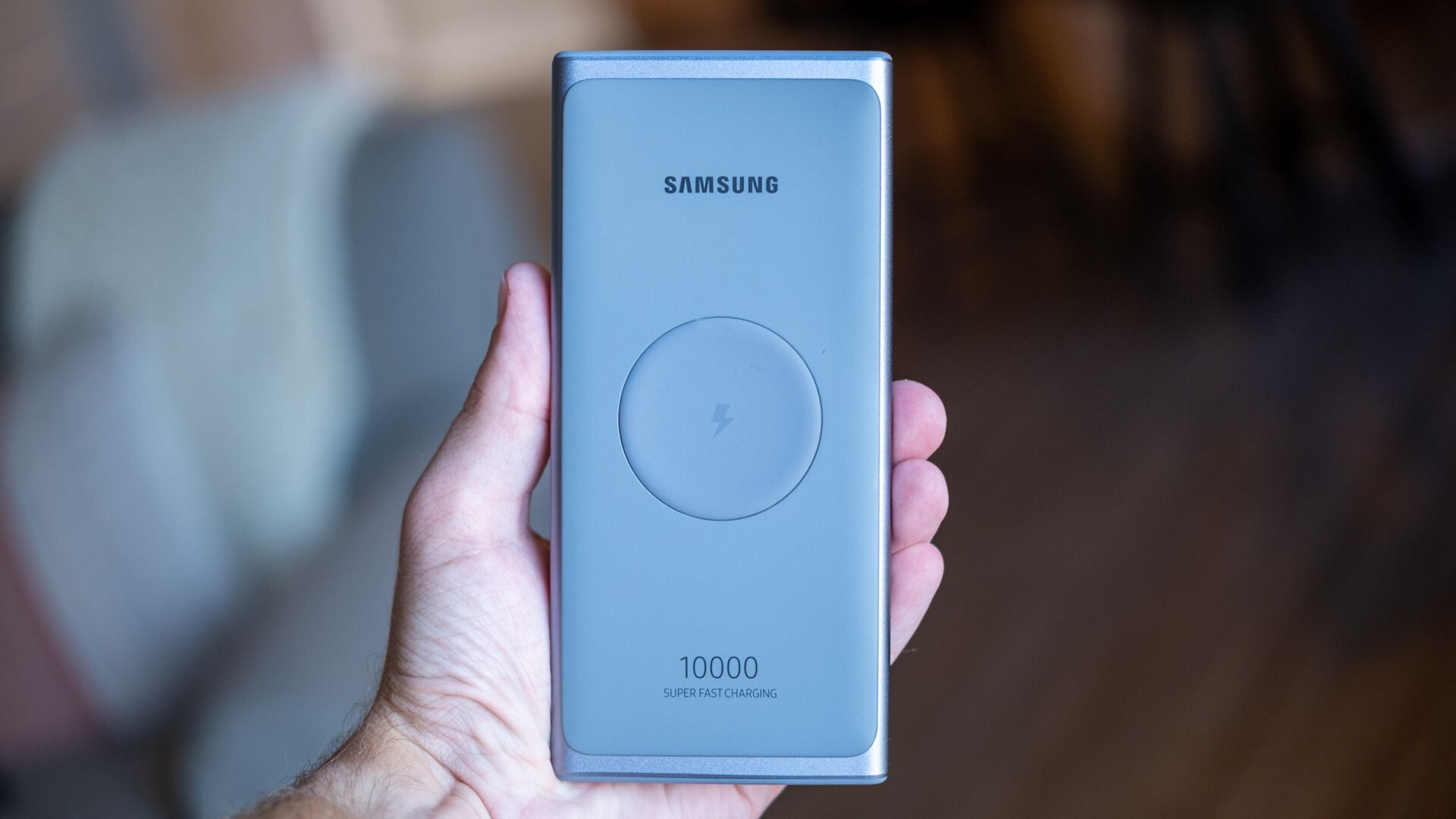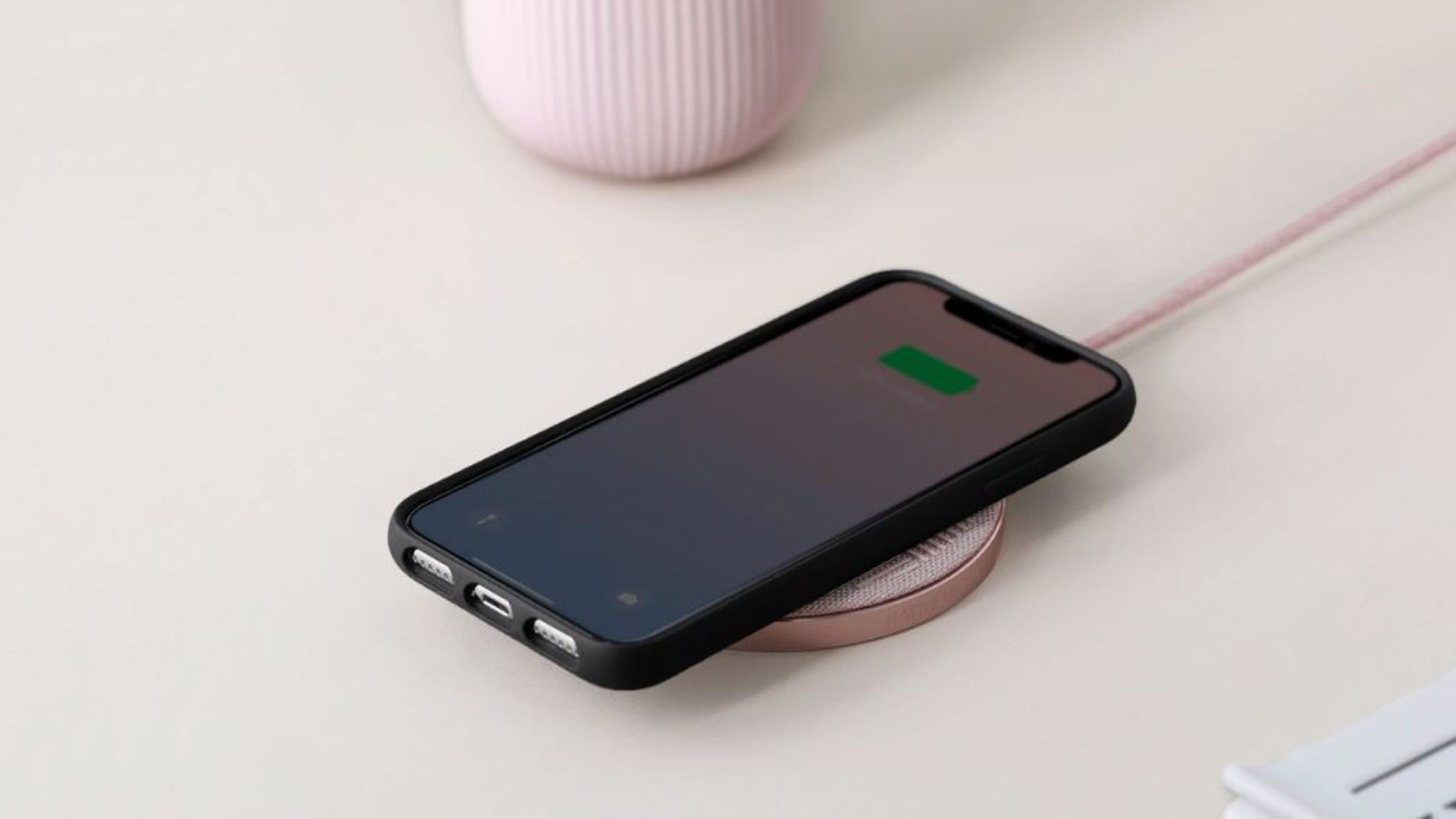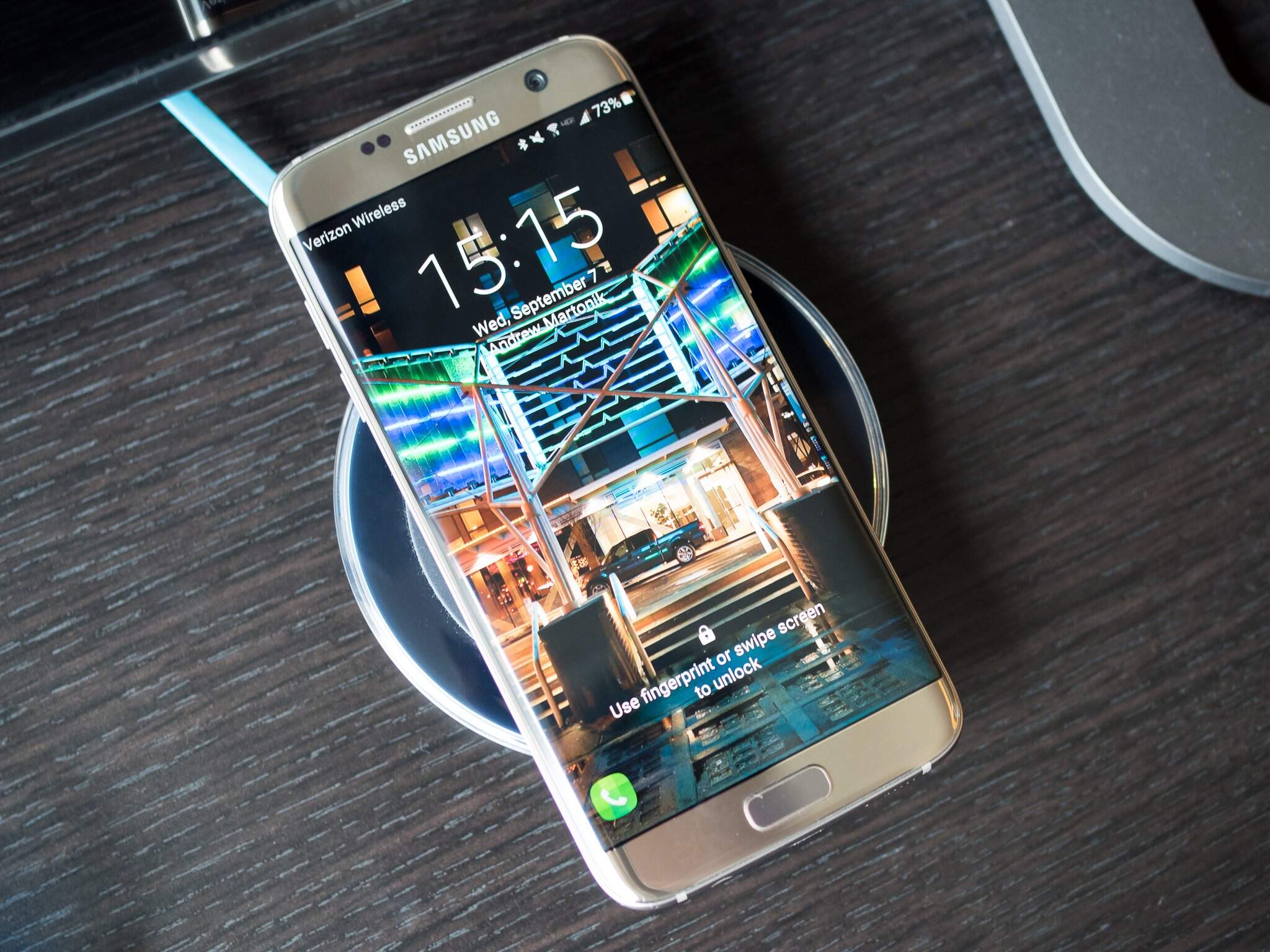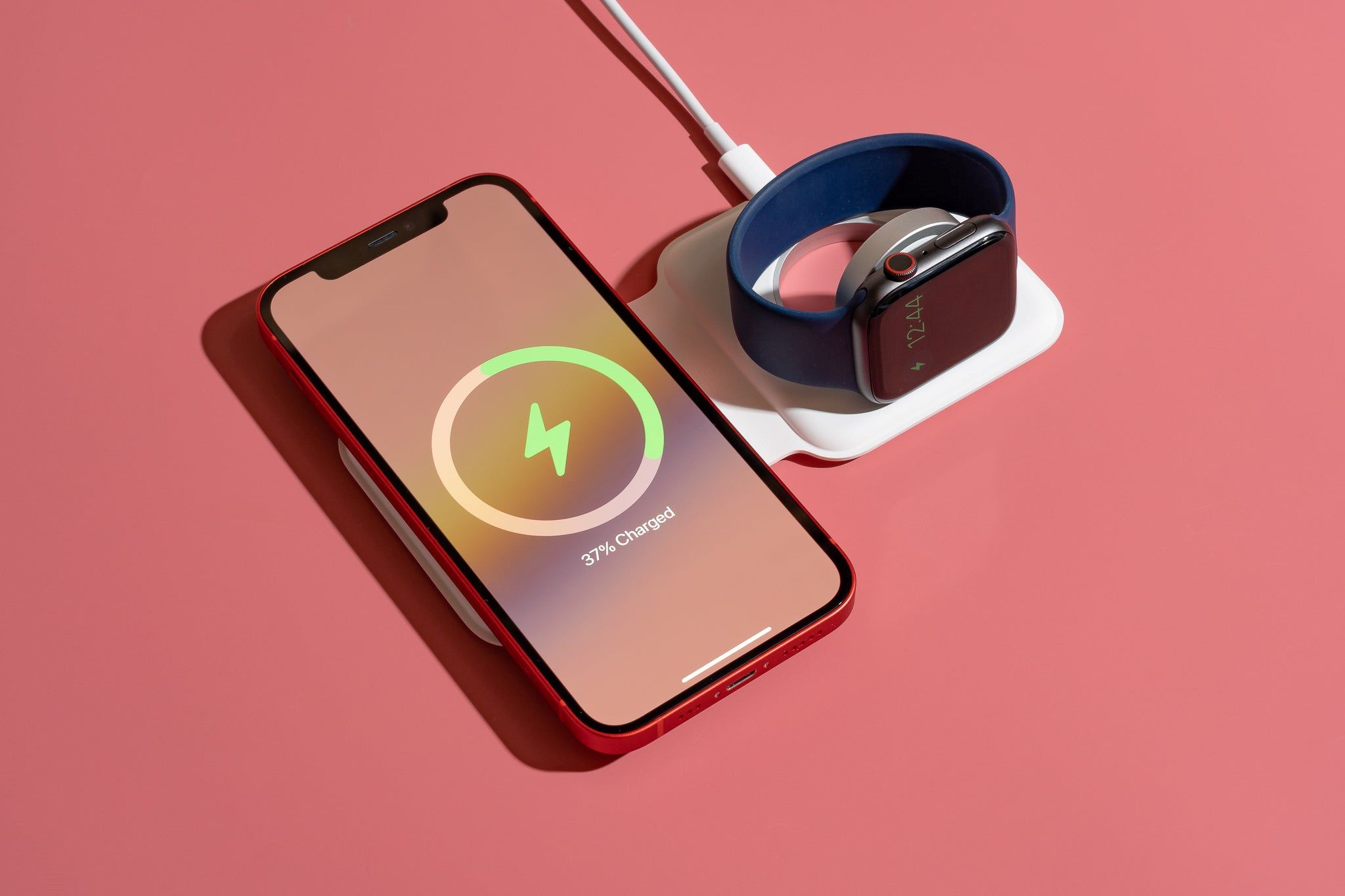Introduction
Welcome to the world of wireless charging! In today’s fast-paced digital age, the convenience of wireless technology extends beyond just wireless headphones and keyboards. Now, you can charge your devices without the hassle of tangled cords and cables.
So, what exactly is wireless charging? How does it work, and how can you make the most out of this innovative technology? In this article, we will explore the ins and outs of wireless chargers and provide you with all the information you need to use them effectively.
Wireless charging, also known as inductive charging, enables the transfer of power between a charging pad or mat and your device, simply by placing it on the charging surface. It eliminates the need for physical connections, making the charging process more convenient and clutter-free.
One of the significant advantages of wireless charging is the flexibility it offers. With a wireless charger, you can say goodbye to the hassle of plugging and unplugging your devices multiple times a day. Whether you’re at home, at the office, or on the go, you can effortlessly charge your compatible devices by just setting them on the charging pad.
In this era of technological advancements, wireless charging has become increasingly popular and is now supported by many smartphones, tablets, smartwatches, and even some laptops. As the demand for wireless charging continues to rise, it’s important to understand the basic concepts and functionality to take full advantage of this cutting-edge technology.
In the following sections, we will delve deeper into how wireless chargers work, the different types available, and how to choose the right one for your needs. We will also provide step-by-step instructions on setting up your charger and address common troubleshooting issues. Finally, we will share some tips and tricks to maximize the efficiency of your wireless charging experience.
So, if you’re ready to untangle your life from pesky cords and cables, let’s dive into the world of wireless charging and discover a whole new level of convenience!
Understanding Wireless Charging
Wireless charging is a technology that allows you to charge your devices without the need for physical cables or connectors. Instead, it utilizes electromagnetic fields to transfer power from a charging pad or mat to your device. Understanding how wireless charging works is essential to fully grasp its benefits and limitations.
At the heart of wireless charging is inductive coupling, which involves two coils: a transmitting coil in the charging pad and a receiving coil in your device. When the device is placed on the charging pad, these coils create an alternating current in the transmitting coil, generating a magnetic field. This magnetic field induces an electrical current in the receiving coil, effectively charging the device’s battery.
It’s important to note that wireless charging requires a compatible device with built-in wireless charging capabilities or an external receiver attachment. The most common standard for wireless charging is Qi (pronounced “chee”), which is supported by many popular smartphone brands.
While wireless charging offers convenience, it does come with limitations. Firstly, the range between the charging pad and your device is usually limited to a few millimeters. This means that your device needs to be placed directly on the charging surface for optimal charging efficiency. Misalignment or the presence of physical barriers, such as thick phone cases or metal objects, can hinder the charging process.
Another important factor to consider is the power output of the wireless charger. Higher power output chargers can charge your device faster, but it’s crucial to ensure that your device is compatible with the charger’s power output specifications. Using an incompatible charger may result in slower or inadequate charging.
Lastly, wireless charging is not as efficient as traditional wired charging. Some energy is lost as heat during the process of transferring power wirelessly. Therefore, it may take slightly longer to charge your device using a wireless charger compared to a wired charger.
Despite these limitations, wireless charging offers convenience and eliminates the need for multiple cables and connectors. It’s an ideal solution for users who value simplicity and want to reduce clutter. As technology continues to advance, wireless charging capabilities are expected to improve, making it an even more viable option in the future.
In the following sections, we will explore the different types of wireless chargers available and provide guidance on selecting the right one for your specific needs. So, let’s continue our journey into the fascinating world of wireless charging!
How Wireless Chargers Work
Wireless chargers operate on the principle of electromagnetic induction, which allows for the transfer of electrical energy from the charging pad to your device without the need for physical connections. To understand how wireless chargers work, let’s take a closer look at the key components and the charging process.
1. Transmitting Coil: The charging pad or mat contains a transmitting coil that generates an alternating current. This current creates a magnetic field around the coil when power is supplied to it.
2. Receiving Coil: Your device, whether it’s a smartphone, smartwatch, or another compatible device, must have a receiving coil. This coil is responsible for picking up the magnetic field generated by the transmitting coil.
3. Magnetic Field: When your device is placed on the charging pad, the magnetic field created by the transmitting coil induces an electrical current in the receiving coil of your device.
4. Rectification and Conversion: The electrical current induced in the receiving coil is then rectified and converted into direct current (DC) by a rectifier circuit. This converted current is used to charge your device’s battery.
It’s important to note that wireless chargers require direct contact between the transmitting coil and the receiving coil to work efficiently. Therefore, proper alignment and a flat charging surface are crucial for optimal charging performance.
Wireless charging technology has evolved over the years, and advancements have been made to improve the efficiency and charging speed. However, it’s important to understand that wireless charging is inherently less efficient compared to wired chargers. An element of energy is lost as heat during the charging process, which can lead to slightly longer charging times and lower overall efficiency.
Moreover, the power output of your wireless charger can impact the charging speed. Wireless chargers typically have different power output options, such as 5W, 10W, or even higher. The higher the power output, the faster your device will charge, provided it is compatible with that power output.
Additionally, some wireless chargers incorporate advanced features like temperature control and foreign object detection. These features help protect your device from overheating and prevent any potential damage caused by the presence of foreign objects on the charging pad.
Understanding how wireless chargers work can help you make informed decisions when selecting a charger and using it correctly. In the next section, we will explore the different types of wireless chargers available in the market, allowing you to choose the one that best suits your needs.
Types of Wireless Chargers
Wireless chargers come in various types and designs, catering to different devices and user preferences. Understanding the different types of wireless chargers will help you choose the one that suits your needs and enhances your charging experience. Let’s explore some of the common types of wireless chargers available:
1. Charging Pads/Mats: This is the most common type of wireless charger, consisting of a flat surface where you can place your device to charge. Charging pads or mats are available in different sizes and designs, making them versatile for various devices.
2. Charging Stands/Docks: Charging stands or docks are designed to hold your device at an upright angle, allowing you to conveniently use your device while it charges. These chargers are especially popular for smartphones and offer a great solution for using your device hands-free during charging.
3. Car Wireless Chargers: These wireless chargers are specifically designed for use in vehicles. They often come in the form of wireless charging car mounts, allowing you to secure your device while it charges wirelessly. Car wireless chargers usually connect to the vehicle’s power source, such as a USB port or a car charger adapter.
4. Multi-Device Chargers: These chargers are capable of charging multiple devices simultaneously. They usually have multiple charging coils or designated charging spots for each device. Multi-device chargers are convenient for households or offices with multiple devices to charge at once.
5. Portable Wireless Chargers: Portable wireless chargers, also known as power banks or wireless power banks, are battery-powered chargers that allow you to charge your devices on the go. These chargers are especially useful when you don’t have access to a wall outlet or when you’re traveling.
6. Furniture with Built-in Chargers: Some innovative furniture pieces, such as desks, nightstands, or lamps, feature built-in wireless charging capabilities. This integration allows you to charge your devices discreetly while adding a sleek and modern touch to your home or office.
7. Customized/Branded Chargers: Many brands offer wireless chargers with customized designs, logos, or branding elements. These chargers can be great promotional items or personalized gifts, allowing you to showcase your own style or represent your favorite brand.
When choosing a wireless charger, it’s crucial to ensure compatibility with your device. Most wireless chargers are designed to follow the Qi standard, which is widely adopted by major smartphone manufacturers. However, it’s always a good idea to check if your device supports wireless charging and if it is compatible with the charger you intend to purchase.
Now that we’ve explored the different types of wireless chargers available, it’s time to move on to the next section, where we will provide guidance on selecting the right wireless charger for your needs.
Choosing the Right Wireless Charger
With the wide variety of wireless chargers available in the market, it’s essential to choose the right one that meets your specific charging needs. Here are some key factors to consider when selecting a wireless charger:
1. Compatibility: Ensure that the wireless charger you choose is compatible with your device. Most smartphones and devices support the Qi wireless charging standard, but it’s always best to double-check before making a purchase. Verify if your device has built-in wireless charging capabilities or if you need an external receiver attachment.
2. Power Output: Pay attention to the power output of the wireless charger. Higher power output chargers, typically ranging from 5W to 15W or more, can charge your devices faster. However, ensure that your device supports the charger’s power output specifications to maximize charging speed and efficiency.
3. Charging Speed: Consider the charging speed of the wireless charger. Some chargers may offer fast charging capabilities, while others may provide standard charging speeds. If you want a quick charging experience, look for chargers that support fast charging technologies like Qualcomm Quick Charge or Power Delivery.
4. Design and Form Factor: Wireless chargers come in various designs and form factors. Choose a design that suits your aesthetics and functionality preferences. Whether you prefer a flat charging pad, an angled stand, or a portable power bank, select a wireless charger that complements your lifestyle and usage scenarios.
5. Reliability and Durability: Look for wireless chargers from reputable brands known for their quality and reliability. Read reviews and user experiences to determine the durability and overall performance of the charger. Opt for chargers with built-in safety features like temperature control, overcharge protection, and foreign object detection.
6. Additional Features: Consider any additional features that may enhance your charging experience. Some wireless chargers come with LED indicators to show the charging status, non-slip surfaces to keep your device secure, and even built-in cooling fans to prevent overheating during charging.
7. Price: Wireless chargers come in various price ranges, so determine your budget and find a charger that offers the right balance of features and affordability. Keep in mind that higher-priced chargers may offer faster charging speeds, premium build quality, and advanced features.
Remember to read product specifications, customer reviews, and compare different options before making your final decision. Take into account your specific device, charging requirements, and personal preferences to ensure you choose the right wireless charger that satisfies your needs.
Now that you have a better understanding of how to choose the right wireless charger, let’s move on to the next section, where we will guide you through the setup process of your wireless charger.
Setting Up Your Wireless Charger
Setting up your wireless charger is a straightforward process that involves a few simple steps. Follow the instructions below to get your wireless charger up and running:
1. Gather the necessary components: Ensure that you have all the components required for setup, including the wireless charger, power adapter, and any additional cables or attachments that may be included in the package.
2. Find a suitable location: Select a flat and stable surface to place your wireless charger. It’s essential to choose a location that is easily accessible and convenient for placing and retrieving your devices.
3. Connect the power adapter: Plug the power adapter provided with your wireless charger into a nearby power outlet. Make sure to use the correct voltage and ensure a stable power supply.
4. Connect the charging cable: If your wireless charger requires a separate charging cable, connect it securely to the charging pad or dock. The other end of the cable should be connected to the power adapter.
5. Position your device: Place your compatible device on the wireless charger’s charging pad or dock. Ensure that the device is centered on the charging surface to optimize charging efficiency.
6. Confirm charging connection: Check if your device is recognized by the wireless charger. Most wireless chargers have LED indicators that illuminate to indicate a successful charging connection. You may also see a charging icon or notification on your device’s screen.
7. Adjust for optimal alignment: If your wireless charger has multiple charging coils or an adjustable design, you may need to adjust the alignment of your device for optimal charging performance. Refer to the manufacturer’s instructions for any specific alignment guidelines.
8. Verify charging status: Monitor the charging status of your device using the LED indicators or on-screen notifications. It’s normal for the device and charger to generate a slight amount of heat during charging, but if you notice excessive heat or any other issues, refer to the troubleshooting section in this guide.
9. Charging completion: Once your device has reached its desired charging level or is fully charged, you can remove it from the wireless charger. Remember to disconnect the power adapter from the power outlet when you’re done charging.
Following these steps will ensure that your wireless charger is properly set up and ready to provide convenient and efficient charging for your devices. If you encounter any difficulties during the setup process or experience issues with charging, refer to the troubleshooting section in this guide for possible solutions.
Now that you have successfully set up your wireless charger, let’s move on to the next section, where we will discuss how to correctly position your device on the charger for optimal charging performance.
Placing Your Device on the Charger
Properly positioning and placing your device on the wireless charger is crucial to ensure efficient and effective charging. Here are some tips to help you achieve optimal charging performance:
1. Center your device: Position your device at the center of the charging pad or dock. This ensures that the coils in both the charger and your device align properly, allowing for maximum charging efficiency. Most wireless chargers have markings or indicators to help you locate the ideal placement area.
2. Remove obstructions: Make sure there are no obstructions between your device and the charging surface. Thick phone cases, metal objects, and credit cards with magnetic strips can interfere with the charging process. It’s best to remove such obstructions before placing your device on the charger.
3. Align charging coils: Check the alignment of the charging coils on both the wireless charger and your device. The coils should be in direct contact with each other for optimal energy transfer. If your charger has multiple coils, ensure that the coils in your device match the ones on the charging surface.
4. Use the correct orientation: Some wireless chargers require your device to be placed in a specific orientation for charging. For example, vertical charging stands may require your device to be positioned vertically. Refer to the user manual or instructions provided by the manufacturer to determine the correct orientation for your wireless charger.
5. Optimize charging pad surface: If you’re using a charging pad, ensure that the surface is clean and free from dust, debris, or liquid spills. A dirty or wet charging pad can affect the charging performance and even potentially damage your device.
6. Take off metal attachments: If your device has any metal attachments or accessories, such as magnetic car mounts or metal plates for magnetic phone holders, it’s recommended to remove them before placing your device on the wireless charger. Metal objects can interfere with the wireless charging process.
7. Check for proper connection: Once you’ve placed your device on the charger, verify that it is charging correctly. Look for an indication on the device’s screen, such as a charging icon or battery level indicator. Additionally, some wireless chargers have LED indicators that light up when a device is successfully connected and charging.
Remember that proper placement and alignment are key to ensure efficient charging. If your device is not charging or if you notice slow charging speeds, try repositioning it on the charger to achieve a better connection. Additionally, refer to the troubleshooting section of this guide for solutions to common charging issues.
By following these guidelines and properly placing your device on the wireless charger, you can ensure a seamless and hassle-free charging experience. Now that you know how to place your device correctly, let’s move on to the next section, where we will address common troubleshooting issues associated with wireless chargers.
Troubleshooting Common Issues
While wireless chargers provide the convenience of cable-free charging, there may be instances where you encounter issues. Here are some common problems you might face when using wireless chargers and their potential solutions:
1. Slow or inefficient charging: If you notice that your device is charging slowly or not charging at all on the wireless charger, check for proper alignment. Ensure that your device is correctly positioned on the charging pad or dock, with the charging coils properly aligned. Additionally, verify that your device is compatible with the power output of the charger and that there are no obstructions or metal objects interfering with the charging process.
2. Intermittent charging or disconnects: If your device keeps disconnecting and reconnecting from the wireless charger, try unplugging and re-plugging the charger. Also, make sure there is no debris or foreign objects on the charging surface or between your device and the charger. If the issue persists, it could be a problem with the charger or your device’s wireless charging components. Try using a different charger or consult the manufacturer for further assistance.
3. Overheating: Wireless charging can generate some heat, but if your device becomes excessively hot during charging, it’s recommended to remove it from the charger and allow it to cool down. Heat can be caused by using a charger that exceeds the recommended power output for your device or by obstructions that prevent proper heat dissipation. Ensure that you are using a charger that is specifically designed for your device and that the charging pad or dock has sufficient ventilation.
4. Incompatibility issues: If your device is not wirelessly charging at all, make sure your device supports wireless charging and is compatible with the wireless charger you are using. Some older devices might not have wireless charging capabilities, and certain chargers might only work with specific brands or models. Double-check your device’s specifications and consult the user manual or manufacturer’s website for compatibility information.
5. Charging pad or dock not working: If the charging pad or dock itself is not working, check if it is properly connected to the power source. Ensure that all cables and connections are secure and functioning correctly. If the charging pad still does not work, it may be a problem with the charger’s internal components. Consider contacting the manufacturer for warranty or troubleshooting assistance.
Remember to always refer to the user manual or manufacturer’s documentation for specific troubleshooting steps and recommendations related to your wireless charger. It’s also helpful to check for any firmware updates or software compatibility issues that might be impacting the wireless charging performance on your device.
By following these troubleshooting tips, you can overcome common issues and ensure a smooth and efficient wireless charging experience. If you continue to experience issues, it’s best to seek support from the charger’s manufacturer or contact your device’s customer support for further assistance.
Now that we have addressed common troubleshooting issues, let’s move on to the next section where we will explore how to maximize the efficiency of your wireless charger.
Maximizing the Efficiency of Your Wireless Charger
To ensure optimal performance and efficiency when using a wireless charger, consider the following tips to make the most out of your charging experience:
1. Remove phone cases or covers: Thick and bulky phone cases can interfere with wireless charging. If possible, remove the phone case or use a slim case that does not obstruct the charging coils for a better connection between the charger and your device.
2. Align the charging coils: Proper alignment of the charging coils is crucial for efficient charging. Take a moment to locate the charging coils on both your device and the charger. Make sure they are aligned as closely as possible to achieve maximum charging efficiency.
3. Clean the charging surfaces: Regularly clean the charging pad or dock to remove dust, debris, or any foreign substances. A clean charging surface ensures better contact and reduces the chances of interference during the charging process.
4. Check for firmware updates: Some wireless chargers have firmware that can be updated for enhanced compatibility and performance. Check for any available firmware updates from the manufacturer’s website or through a companion app, if applicable.
5. Avoid extreme temperatures: Avoid exposing your device and wireless charger to extreme temperatures, as they can impact charging efficiency. Extreme cold or hot temperatures can adversely affect battery performance and charging capabilities. Keep your charger and device in a moderate temperature environment for optimal results.
6. Use an appropriate power source: Ensure that you are using a reliable and compatible power source for your wireless charger. Using a low-quality or incompatible power adapter may result in slower charging speeds or inadequate power output.
7. Position your device in a stable manner: Place your device securely on the charging pad or dock to prevent accidental displacement during charging. A stable connection ensures uninterrupted charging and avoids potential damage caused by falls or slips.
8. Remove unnecessary devices from charging area: If you have multiple devices on the same charging pad or dock, make sure to remove any devices that are not actively charging. This can help reduce interference and ensure that all available power is directed to the device you want to charge.
9. Use high-quality wireless chargers: Invest in a reliable, high-quality wireless charger from reputable brands. These chargers are often equipped with advanced features, such as temperature control and foreign object detection, which maximize efficiency and ensure safe charging.
By following these recommendations, you can enhance the efficiency of your wireless charger and optimize your charging experience. Remember that wireless charging may not always match the speed of traditional wired charging due to inherent limitations, but it offers convenience and eliminates the hassle of dealing with cables.
In the next section, we’ll share some additional tips and tricks to help you get the most out of your wireless charger and make your charging routine even more convenient.
Tips and Tricks for Using Wireless Chargers
Using wireless chargers can be simple and convenient, but there are a few tips and tricks that can further enhance your charging experience. Here are some handy tips to keep in mind when using wireless chargers:
1. Charge overnight: Wireless chargers are a great option for overnight charging. Simply place your device on the charger before going to bed, and wake up to a fully charged battery in the morning. This eliminates the need to fumble with cables and ensures that your device is ready for the day ahead.
2. Optimize charging time: If you’re in a hurry and need a quick charge, consider using a wired charger. Wireless charging can be slightly slower compared to wired charging, so using a wired charger when time is limited can give you a faster boost.
3. Invest in multiple wireless chargers: If you have multiple devices that support wireless charging, consider investing in multiple wireless chargers. This allows you to simultaneously charge multiple devices, saving time and preventing conflicts when everyone needs to juice up their devices at once.
4. Use an adjustable or multi-coil charger: If you frequently use your device while it’s charging, consider opting for an adjustable charging stand or a charger with multiple coils. These chargers allow you to position your device at an angle or in different positions, making it easier to view your screen while charging.
5. Consider wireless charger placement: If you often use your device while it’s charging, choose a wireless charging stand or dock that places your device at a convenient viewing angle. This way, you can continue to use your device comfortably while it charges.
6. Keep spare wireless chargers handy: Having spare wireless chargers in different locations, such as your office, car, or travel bag, ensures that you always have a convenient charging option available no matter where you are. It’s always helpful to have a backup charging solution, especially during emergencies or when you’re on the go.
7. Monitor charging temperature: While wireless chargers are designed to handle heat, it’s a good idea to keep an eye on the temperature of your device during charging. If you notice excessive heat, you may want to remove your device temporarily from the charger to allow it to cool down.
8. Customize your charging station: Personalize your charging station by using wireless chargers that match your style or décor. There are various colors, designs, and materials available, allowing you to not only charge your device but also add a touch of aesthetic appeal to your space.
9. Keep charging accessories organized: To avoid a tangle of cables, keep your wireless chargers and charging cables organized. Use cable management solutions such as cable clips, organizers, or charging stations to keep your charging area neat and tidy.
By following these tips and tricks, you can maximize the convenience and efficiency of your wireless chargers and make your charging routine more seamless. Remember to prioritize compatibility, quality, and proper positioning for the best charging experience.
Now that you’re equipped with these helpful tips, you’re ready to enjoy the benefits of wireless charging. In the concluding section, we’ll summarize key takeaways from this guide and reiterate the advantages of using wireless chargers.
Conclusion
Wireless charging technology has revolutionized the way we recharge our devices, offering convenience, reduced cable clutter, and a seamless charging experience. Throughout this guide, we’ve explored the ins and outs of wireless chargers, providing you with a comprehensive understanding of how they work and how to use them effectively.
We began by introducing the concept of wireless charging and its advantages, freeing us from the hassle of tangled cords and cables. We then delved into the technical aspects, understanding the principles behind wireless charging and the different types of wireless chargers available in the market.
We also provided practical advice on selecting the right wireless charger for your needs and walked you through the setup process, ensuring a smooth and hassle-free charging experience. Addressing potential troubleshooting issues, we offered solutions to common problems that may arise during wireless charging.
To maximize the efficiency of your wireless charger, we shared tips and tricks that will enhance your charging experience, such as optimizing placement, considering multiple chargers, and monitoring charging temperatures. We also emphasized the importance of using reputable and compatible wireless chargers.
Wireless chargers are a convenient solution for charging your devices, whether at home, in the office, or on the go. They provide a clutter-free charging experience that simplifies your daily routines and reduces the need for multiple cables and adapters.
As technology continues to advance, we can expect wireless charging to become even more efficient and accessible. With the increasing adoption of wireless charging capabilities in devices, it is evident that this technology is here to stay.
Remember, when using wireless chargers, always ensure compatibility, proper alignment, and a clean charging surface for optimal performance. By following the guidelines and tips in this guide, you can make the most out of your wireless charger and enjoy the convenience it offers.
Now that you’re armed with knowledge about wireless chargers, it’s time to embark on a cable-free charging journey. Embrace the simplicity, convenience, and freedom that wireless charging brings, and say goodbye to the hassle of tangled cords once and for all!







